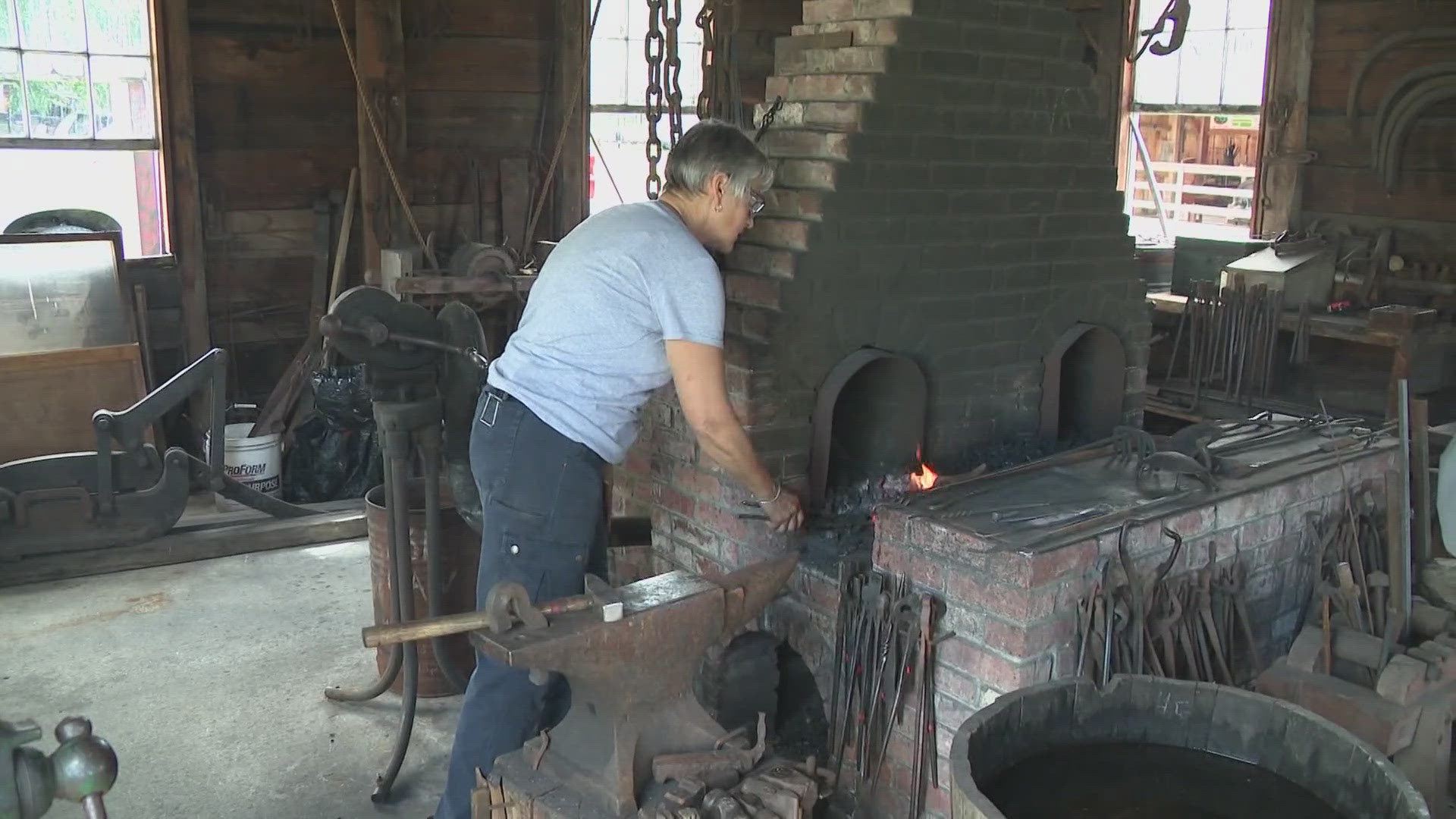WINDSOR, Maine — The lights on the midway flash as music blares from the big rides. Cows give loud moos in the show ring, as the hooves of the harnessed racing horses pound over the dirt track.
If it’s the week before Labor Day, all this action, noise, and light must be the Windsor Fair.
The fair has been running each August for as long as locals can remember, celebrating the harvest and products of area farms, showing off new products, and giving hardworking Mainers a chance for fun before fall sets in.
Windsor has become the second largest agricultural fair in Maine, said Dan Foster, second vice president of the fair and manager of the commercial section.
"We generally get 100,000 to 125,000 people [that] come through our gates in the week,” Foster said while touring the fairgrounds the day before opening.
The classic events from dairy cow and beef judging, to harness racing, carnival rides, and musical entertainment, help draw those big crowds.
However, Foster said another less common portion of the fair has become a major attraction: the Windsor Historical Society.
Over the past 40 years, the historical society has developed a corner of the fairgrounds into a significant exhibit of rural Maine history. Old houses, a schoolhouse, a large barn, and even a blacksmith shop and cooper shop now grace the grounds and are open for tours during the fair.
"We are looking at approximately a circa 1900 small village," Rick Cummings, who has spent 30 years helping to assemble the large history exhibit, said. "Blacksmith shop, cooper shop [is] where they made barrels. That barn is 220 years old [and] we moved it here."
They moved all of the buildings to the grounds over the years. The blacksmith shop came from Windsor itself, while the old school came from Somerville and houses came from other neighboring towns. All have been rebuilt as needed, and fill the neatly mowed "common" area, which Cummings said includes a sort of main street connecting them. A large metal tower with an old-time windmill has been raised as well. It used to pump water for the small water system in nearby Weeks Mills.
The blacksmith shop operates throughout the fair as does the sawmill across the road. On the day before the fair opening, blacksmith Jan Tricarico was hammering out an iron pin used to hold the wooden bows of an oxbow in place.
"Sometimes the farmer will drive a team of oxen right up to the shop to get them," she said.
The shop looks like a step back to the 1800s, with well-worn tools hanging from hooks, pieces of steel or iron sitting on benches, and the coal-burning forge in the center of the space with a fire ready to form more of the pins the farmers need.
In the sawmill—originally used in a mill in Albion a century ago—the huge, open steel blade shrieks as it trims the edge of a pine board milled earlier. The large mill was carefully reconstructed to be fully operable and is used to cut lumber for other buildings on the grounds. Nearby, a shingle mill of a similar age can slice cedar blocks into neatly tapered shingles—again with the large steel blade spinning close to the operators, a reminder that, back in that day, some jobs could be dangerous.
Inside the separate museum building are smaller displays, ranging from a tinsmith’s shop that operated in Augusta until the 1940s to the former Thompson print shop from Brewer—which the fair still uses—and a portion of an old general store, complete with a large coffee grinder, scale and jars all sitting on a counter that once graced a local landmark, Hussey’s General Store.
Rick Cummings said all of it attracts fairgoers and the big crowds help the historical society.
"Having 100,000 people at your doorstep makes it fun. The kids are amazed, and I like talking to older people who remember this life," he said.
Recalling how rural Mainers used to live is an important goal for the exhibit and the society, which over the years has become a close partner with the Windsor Fair organization to maintain and enhance the exhibit.
Dan Foster said it's an important part of the larger fair at a time when agriculture faces real challenges. There are fewer and fewer farms in Maine he noted, and fewer people who live or understand the needs of farming and the issues it faces.
"So this is more important than ever, to have these fairs as a showcase for agriculture," Foster said.
As for the history section?
"I love it," he said. "It's really become a big part of what the fair is all about."
Cummings summed up what they hope the exhibit achieves.
"You got to remember where you came from to move forward," he said.
The Windsor Fair is open daily through Labor Day, with racing, entertainment, livestock exhibitions, food and other concessions, product displays, and of course, a big display of rural Maine’s history.

